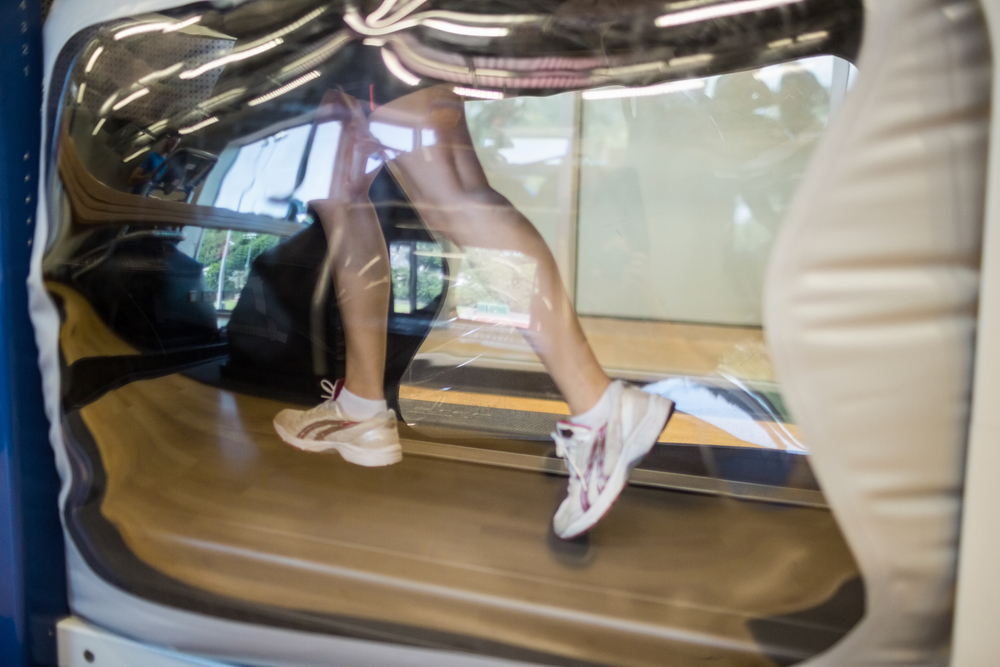Aerobic Anti‐Gravity Exercise Helps CMT Patients With Balance, Walking Ability, Study Finds
Written by |

Exercising with an anti-gravity treadmill may help patients with Charcot-Marie-Tooth (CMT) disease improve their balance and ability to walk, new research suggests.
The study, “Aerobic anti‐gravity exercise in patients with Charcot-Marie-Tooth disease types 1A and X: A pilot study,” appeared in the journal Brain and Behavior.
Even though no effective treatment for CMT is available, exercise may offer therapeutic benefits. Walking is one such possible exercise, but “some patients are too weak in the lower extremity muscles to walk at gravity with sufficient intensity or duration to gain benefit,” authors wrote.
One solution may be an anti-gravity treadmill that uses an “unweighting technology” to off-lift load on the lower extremities.
Danish researchers at the University of Copenhagen’s Neuromuscular Center performed a small pilot study to investigate the effect of aerobic anti-gravity exercise in moderately to severely walking disabled patients with CMT 1A and X. Both disorders are characterized by muscle weakness, sensory loss and joint deformities.
The study recruited patients with a genetically confirmed diagnosis of CMT 1A or X who could walk at least 10 meters (but under 450 meters in a six-minute walking test). Patients who performed more than one hour of aerobic exercise a week were excluded.
Of the 10 patients initially recruited, five finished the proposed exercise routine. Patients underwent their normal activity during a 10-week control period, followed by a 10-week supervised exercise period. The exercise program included “walking or running three times a week for 30 minutes, consisting of five minutes of warm-up and 25 minutes of moderate aerobic intensity of 70-80 percent of maximum heart rate on an anti-gravity treadmill.
Researchers used as primary outcome the results of the 6-minute walk test (primary outcome), followed by additional outcomes including a postural stability test, a clinical test of sensory integration and balance, and tests for measuring fatigue, Berg balance scale and fitness; patients also responded to the 36-Item Short Form Health Survey (SF-36).
The results showed that anti-gravity treadmill training led to a statistically significant improvement in Berg balance scale and postural stability test. Patients’ walking capacity, assessed by the results of the 6-minute walk test, showed improvement. All other outcomes showed no statistical significant difference with the anti-gravity treadmill.
Overall, the study showed “a significant positive change in balance and a trend toward improvement in walking capacity, suggesting that anti-gravity treadmill training of hereditary neuropathies should be pursued in a larger cohort of patients.”




